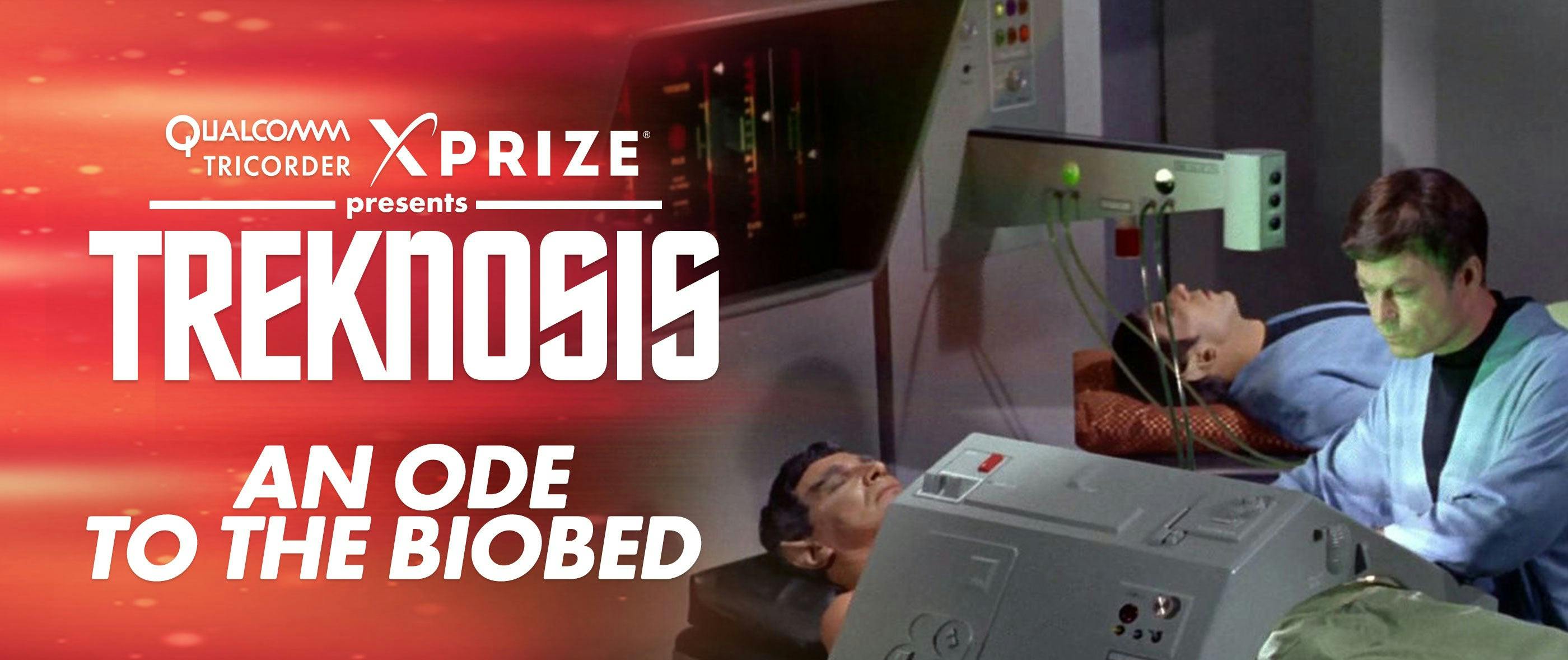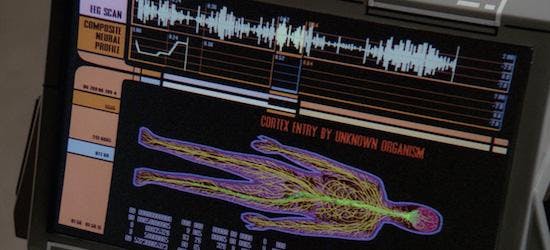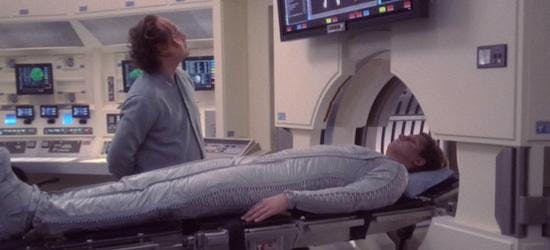
Gather round, everybody, and let's hear it for that unsung hero of Starfleet medicine, the workhorse of Starfleet medical technology, the tricorder's big brother: the biobed.The biobed is the last word in convenience and care for both the patient and the doctor -- just lie down on it, and moments after turning it on, the sickbay staff can get a clear picture of what's going on inside your body down to the cellular level without having to lift a finger.

Even the very first starship to bear the name Enterprise, the NX-01, had an early version of the biobed that was still pretty fantastic: after sliding a patient inside, Dr. Phlox could run any scan he liked.

I'd be more than happy to see something like this developed sooner rather than later -- for personal reasons.Journey back with me to the year 2004: the iPhone hasn't been invented yet, George W. Bush is President of the United States, and I've had what feels like a bad case of gas for three days running. Nothing helps, not even the over-the-counter gas-relief solution I bought at a drugstore. I decide to head to an urgent care clinic in the hopes that a doctor can prescribe me some sort of prescription-strength anti-gas medication that will alleviate my discomfort.During the course of the examination, the doctor gently pats my stomach on the lower right, and the pain spikes. "Ow," I say. His brow furrows, and he gently pats me again. "Ow!" He frowns."I'm sending you to x-ray," he says, and directs me to the medical imaging center across the street from the urgent care clinic. The technician meets me at the door to the x-ray room and ushers me in. After a few minutes, I'm sent back to the clinic’s exam room.Not very long after, the doctor returns. "Your x-rays were inconclusive," he says, "I want you to go get a CT scan." Once again, I walk across the street to a different section of the medical imaging center, where another technician directs me to lay down before activating the scanner.It seems like I've only just gotten back to the exam room when the doctor returns again with a large envelope. "Did you drive yourself here?" he asks, with a note of incredulity in his voice. I nod. "You have appendicitis." He hands me the envelope. "Here are all your charts and scans. Drive to the hospital. They're waiting for you. GO NOW!"The hospital turned out to be fairly close, the surgical staff was indeed waiting for me, and everything turned out fine; I have the small scar to prove it. I also learned a lesson, and though it isn't directly applicable to me anymore, I'm happy to pass it on to others: if you get something that feels like bad gas that won't go away, and the lower right part of your stomach starts to hurt, go to the emergency room! Appendicitis, just like a starship's emergency destruct system, only has to be armed once to cause an irrevocable disaster.

What still troubles me about my experience is that I had to go across the street twice (to two different rooms for two different scans) after the doctor suspected something was wrong with my appendix. In fact, looking back now, that's the moment when I should've become concerned. Anyone familiar with the American health care system is used to wasting lots of time in waiting rooms; on this day, technicians rushed me right into each room and shoved me into the machines as fast as they could.But what if they didn't have to do that? What if, instead, I could've just stretched out on a bed and gotten all my scans done in one place? That would've saved some time, and if my appendix had been worse, would've also prevented some jostling around that could've led to it bursting.I found myself thinking about this after reading about a project at the Lawrence Berkeley National Laboratory to build the world's first total-body positron emission tomography (PET) scanner. Current models can only scan about 10 inches of the body at a time, which tends to hamper their effectiveness at pinpointing diseases. If it gets built, a scan that currently takes 20 minutes could be completed in 30 seconds, subjecting the patient to 1/40th the dose of radiation.It's going to take them a while tough; the scientists are hopeful a prototype will be ready about two years from now. But imagine — once the technology has been proven, maybe someone will get the bright idea to incorporate a standard x-ray machine and CT scanner into the sensor array, too. Within our lifetimes, we might someday get a scan from a machine that wouldn't look out of place in an NX-class sickbay. Now all we need is a good warp five engine.
--Jon Sung is a contributing writer for XPRIZE and copywriting gun-for-hire to startups and ventures all over the San Francisco Bay area. When not wrangling words for business or pleasure, he serves as the captain of the USS Loma Prieta, the hardest-partying Star Trek fan club in San Francisco.XPRIZE is an innovation engine. We design and operate prize competitions to address global crises and market failures, and incentivize teams around the world to solve them. Currently, we are operating numerous prizes, including the $30M Google Lunar XPRIZE, challenging privately funded teams to successfully land a robot on the Moon’s surface, and the $10M Qualcomm Tricorder XPRIZE, challenging teams around the world to create a portable, wireless, Star Trek-inspired medical device that allows you to monitor your health and medical conditions anywhere, anytime. The result? Radical innovation that will help us all live long and prosper.Sign up today to join our mission, be a part of our campaign and win collectibles at: tricorderfederation.org.





